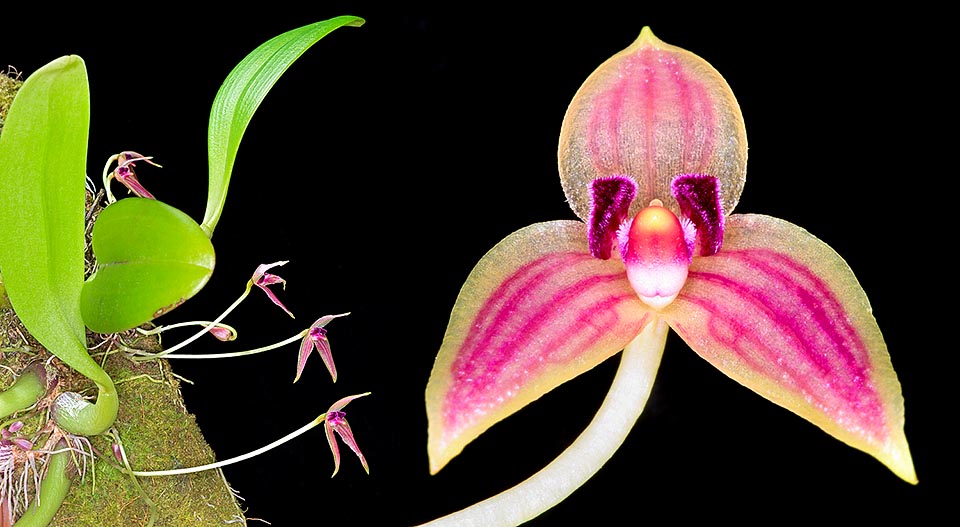Family : Orchidaceae

Text © Pietro Puccio

English translation by Mario Beltramini
The species is native of north-eatsern Papua New Guinea where it grows on the trees of the humid forests of the Finisterre Range around the 1700 m of altitude.
The name of the genus is the combination of the Greek substantives “βολβός” (bolbos) = bulb and “φύλλον” (phyllon) = leaf, with reference to the leaves growing at the apex of the pseudobulbs; the species is honoured to Anja Anker Hoeg.
The Bulbophyllum anjae J.J.Verm. & de Vogel (2014) is an epiphytic species with close pseudobulbs on creeping rhizome, almost cylindrical with slightly enlarged base, about 4 cm long and 1-1,5 cm broad, provided at the apex of one only obovate-elliptic leaf with rounded apex, 6-10 cm long and 2-3,5 cm broad, coriaceous, of pale green colour. Inflorescence from the base of the pseudobulb, 5-7 cm long, bearing only one flower with yellow-greenish sepals with pink veins, dark purple petals but the pale yellow base, reddish labellum with white base and yellow apex and pale pink down. Ovate dorsal sepal with pointed apex, about 1 cm long and 0,7 cm broad, ovate triangular lateral sepals with pointed apex, about 1,6 cm long and 0,6 cm broad.

Bulbophyllum anjae is a small epiphyte of Papua New Guinea bloomed the first time in Europe in the Leiden Hortus Botanicus in Holland © Giuseppe Mazza
Ovate petals with obtuse apex and slightly pubescent, about 3 mm long and 2,5 mm broad; fleshy oblong-ovate labellum, about 4 mm long and 2 mm broad, provided of a dense and short down in the first half and run by 4 short crests at the base; column, 1,5-2 mm long, with stelidia (small excrescences at the sides of the column) falcate and bent upward.
It reproduces by seed, in vitro, and by division, with each section provided of at least 3-4 pseudobulbs.
Species currently (2016) present in cultivation at the Hortus Botanicus in Leiden (Holland), where has bloomed the first time in Europe. Requires a slightly shady exposition, intermediate temperatures, high humidity and constant ventilation. Frequent waterings during the growth period of the pseudobulbs, more spaced in the vegetative stasis, but without ever allowing the substratum to dry up completely, utilizing rain water, demineralized or by reverse osmosis. It well adapts to be mounted on trunks, bark or rafts of cork or of roots of arborescent ferns with sphagnum at the base for maintaining the humidity.
